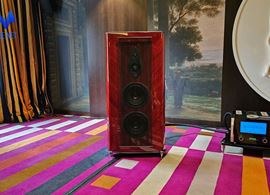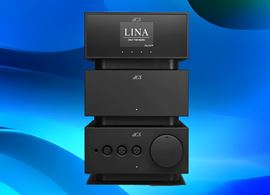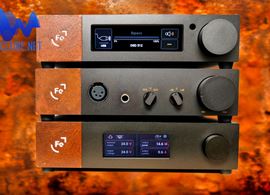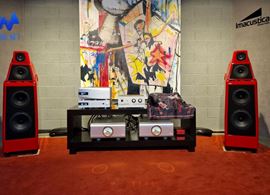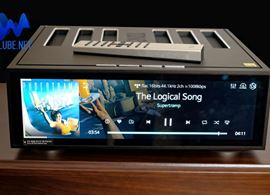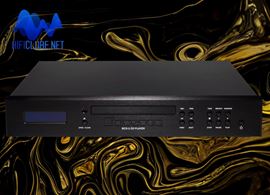The Luxsin X9 is the perfect three-in-one: a superb, state-of-the-art DAC, a headphone amplifier with unique market features, and a preamplifier with balanced outputs and R2R resistor-ladder volume control for less than €1,200.
The DAC alone is worth the asking price, the amplifier is worth just as much, and the balanced preamp feels like a thoughtful bonus.
I was introduced to the Luxsin X9 at High End Munich 2025 by Terry Jiang, and right there it became clear: this was not just another headphone amplifier (see video).
Luxsin is part of the Zidoo Group, also home to EISA multiple award-winning Eversolo Audio, and was created as a distinct entity focused on developing luxury headphone amplifiers with high-precision engineering. Hence the name: Lux + Sin(e), as in sinewave.
Luxury Sin
But after living with the X9 for nearly two months, I’d say "Luxsin" could also mean ‘Luxury Sin’ because its performance matches that of expensive high-end gear that doesn’t necessarily sound better. Moreover, the X9 allows you to adjust the sound to your preference, starting from a flat response free of distortion and jitter.
According to Terry Jiang, the X9 was designed by audiophiles for audiophiles who value reference-grade headphone listening but also appreciate smart control and innovative functionality.
The X9 allows you to adjust the sound to your taste, starting from a flat response, free of distortion and jitter.
I/O Balanced Architecture
The X9 internal architecture is fully differential and balanced from end to end: from the digital input, through the balanced-mode AK4499EX DAC, the current-to-voltage IV converter, the dual OPA1612 output filter, the R2R resistor-ladder volume attenuator, and finally the bridge-configured headphone amplifiers. The signal path remains symmetrical throughout, effectively rejecting interference and common-mode noise.
Build & Design
The Luxsin X9 impresses in both aesthetics and build quality. The chassis is CNC-machined from solid aluminium, with a diamond-cut bevelled front panel and a 15-degree tilt for better screen ergonomics. This sturdy metal frame and rugged side panels not only look premium — they also act as an effective heat sink, maintaining stable operating temperatures even during long sessions as the X9 gets hot!
The front panel features a fully laminated 4.0-inch wide format touchscreen with high resolution. The graphical interface is responsive and operates on a real-time operating system (RTOS). Users can navigate through intuitive menus on this display (see video below).
Note: The X9 is equipped with a Qualcomm QCC5125 BT5.0 receiver, supporting audio protocols such as aptX/LDAC/AAC/SBC. It operates as a high-quality Bluetooth decoder and can pair with multiple mobile devices for wireless playback. High resolution reproduction depends on the device compatibility.
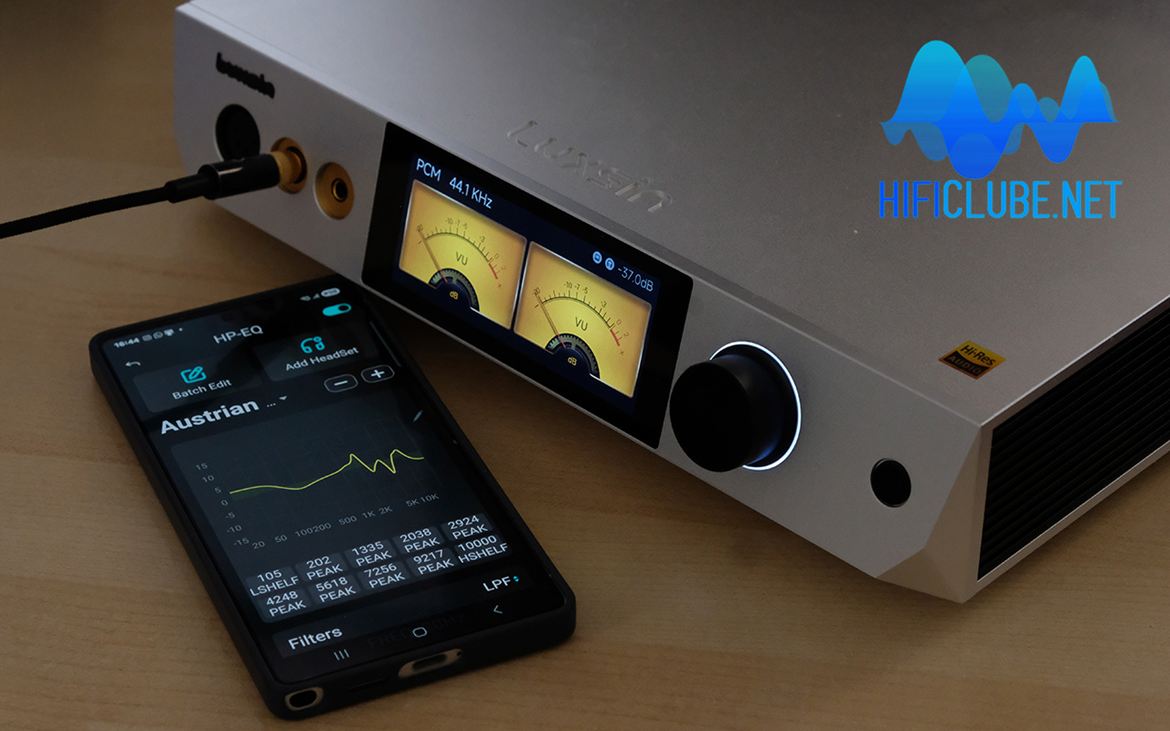
The X9 can be controlled via the included infrared remote control or through an app on your phone or PC.
The X9 can be controlled either with the included infrared remote or via an app on your phone or PC, as it connects to your Wi-Fi network to enable over-the-air (OTA) firmware updates. It has two antennas (Wi-Fi and Bluetooth) to ensure signal stability.
Note: the app doesn’t seem to have the “screen mirroring” function available on Eversolo models. Still, there’s some interaction.
The anodized aluminum volume knob on the right rotates in precise 0.5 to 3 dB steps, providing a tactile and satisfying feel. Regarding dimensions, the X9 measures 300 x 206 x 65 mm and weighs 3.72 kg—a substantial footprint for a desktop unit, but one that reflects the inclusion of an internal linear power supply and sturdy housing.
The Luxsin X9 offers an enviable array of functions that go well beyond the usual DAC/Headamp combo.
A Thousand and One Features.
This might start to sound more like a spec sheet than a review, but the X9 has so many notable features that I have to mention them. If you’re not interested in technical details, feel free to skip ahead and just watch the video.
In short, the Luxsin X9 offers an enviable array of functions that go well beyond the usual DAC/Headamp combo: intelligent EQ, crossfeed, touchscreen with VU meters, app control, and preamp bass management.
And all of this without sacrificing sound purity thanks to its premium build. It’s designed to give the user full control over their listening experience, whether for tonal fine-tuning or seamless system integration.
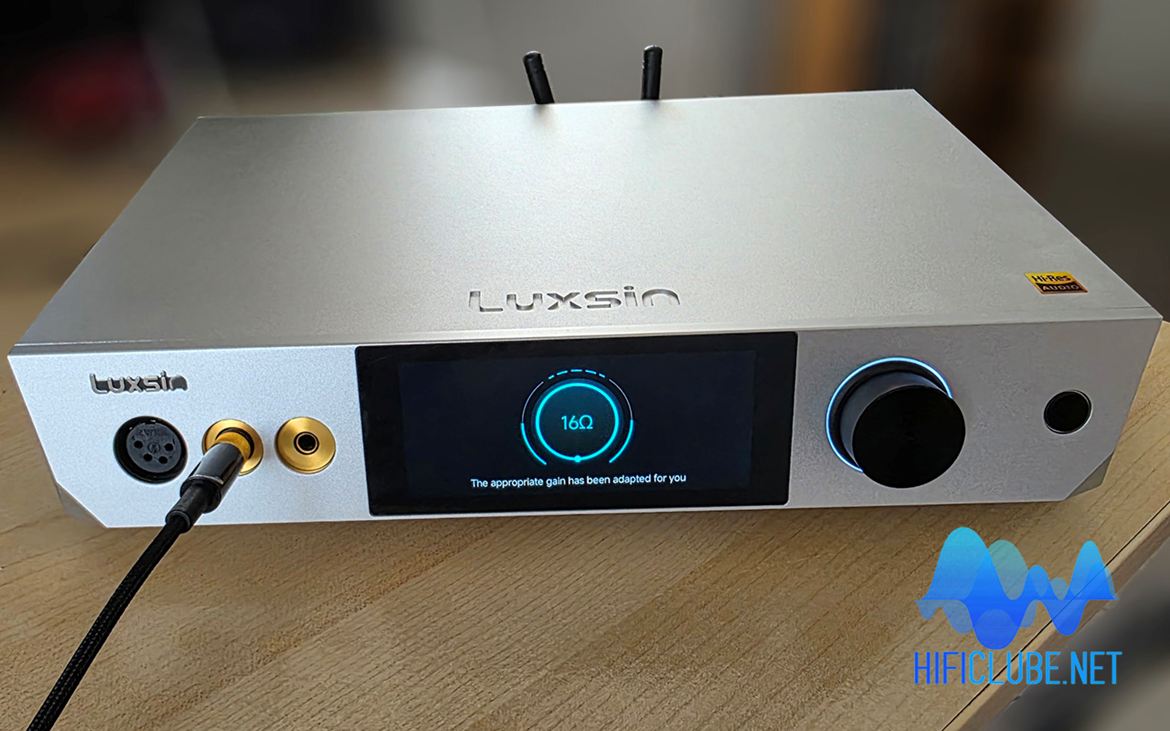
The X9 will automatically assess the headphones impedance and suggest the best gain setting.
Headphone Impedance Self-Detection System (HISDS)
Connect your headphones (6.35 mm or 4.4 mm Pentaconn only), and the X9 will automatically assess their impedance and suggest the best gain setting. This avoids unpleasant volume surprises and ensures even sensitive or hard-to-drive headphones perform optimally within the volume control's range. The detection signal is inaudible and does not affect sound quality.
Note: On the 4-pin XLR output, impedance/gain must be set manually. For the Austrian Audio The Composer used in this review, the correct value measured from both jack inputs is 16 ohms. On the other hand, signal polarity inversion is only available on the XLR output.
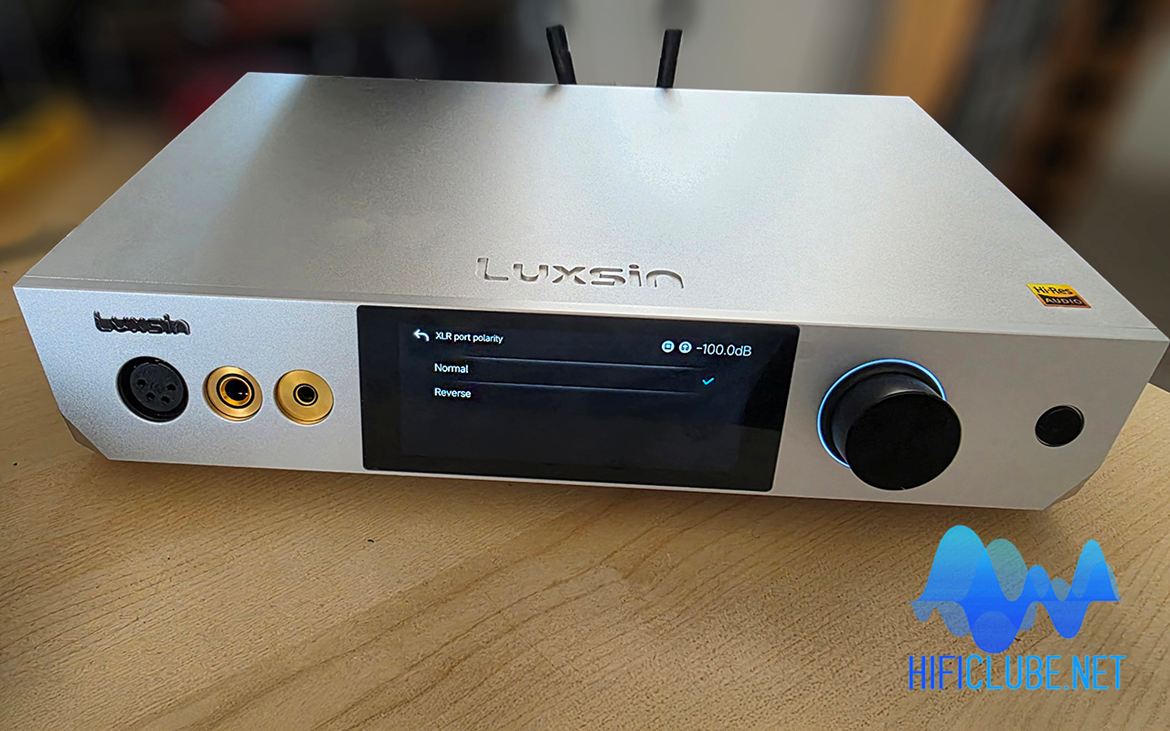
Signal polarity inversion is only available on the XLR output.
HP-EQ (Headphone Equalization)
Upon connection, the X9 can apply a frequency correction for each specific headphone model, aligning the frequency response to flat or closer to a list of Harman target curves.
Its internal database holds over 2,500 headphone profiles (and growing), covering both audiophile classics and newer models.
Note: When using the X9 as a DAC/preamp for active speakers, the HP-EQ should be bypassed (toggle available). But you can still use the tone controls.

The HP-EQ function is a true touch of magic.
According to Luxsin, it's a ‘touch of magic’—and to my ears, it truly was. The EQ can be toggled on or off (bypass available) or customized using PEQ.
Note: DSP (EQ, tone controls, et al) operates only up to 192 kHz and deactivates with DXD and DSD reproduction.
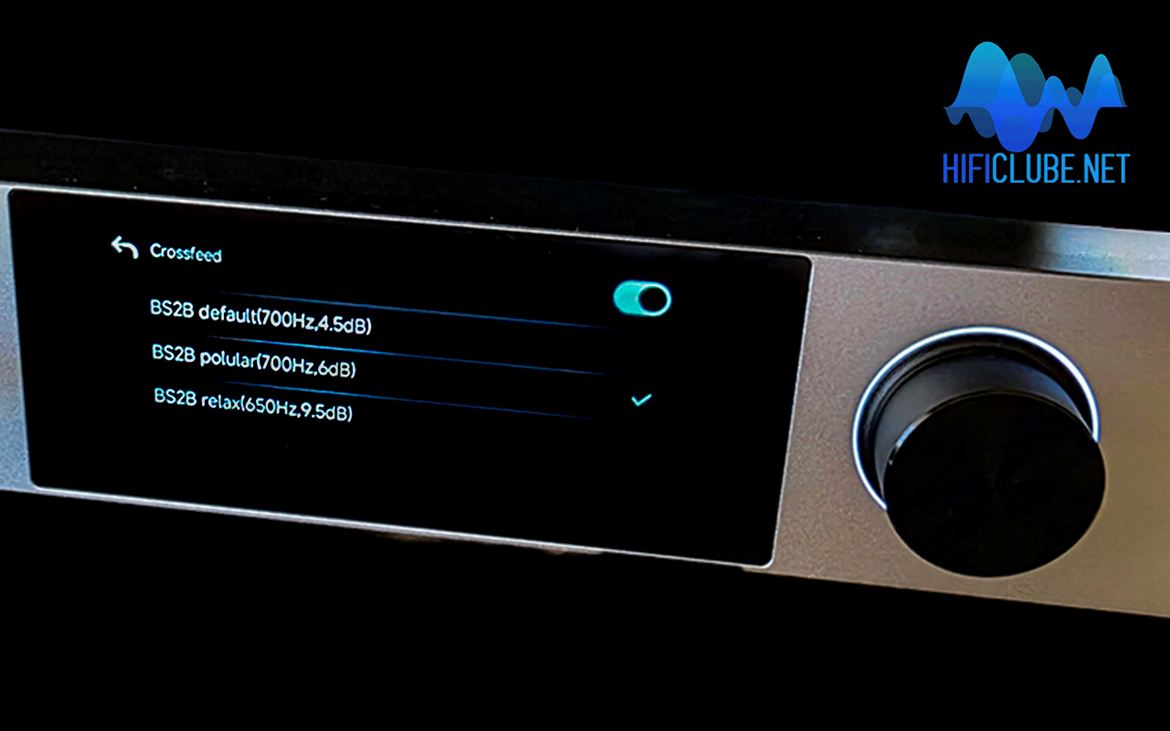
Luxsin X9 Crossfeed setup function
Crossfeed & Soundstage Width
This feature subtly blends left and right channels to produce a more natural speaker-like sound in headphones. It enhances a stronger centre image or a more open presentation, depending on settings. The X9 allows you to adjust both the crossfeed level and soundstage width independently, all within the digital domain for maximum accuracy.
The key point being the listener controls the "dimensions" of the soundstage and can always bypass the effect entirely.
DSP-induced jitter is theoretically possible but inaudible. Nevertheless, my DSD and DXD files sounded much better than Red-Book files. Was it because of the higher resolution or the lack of DSP interference?
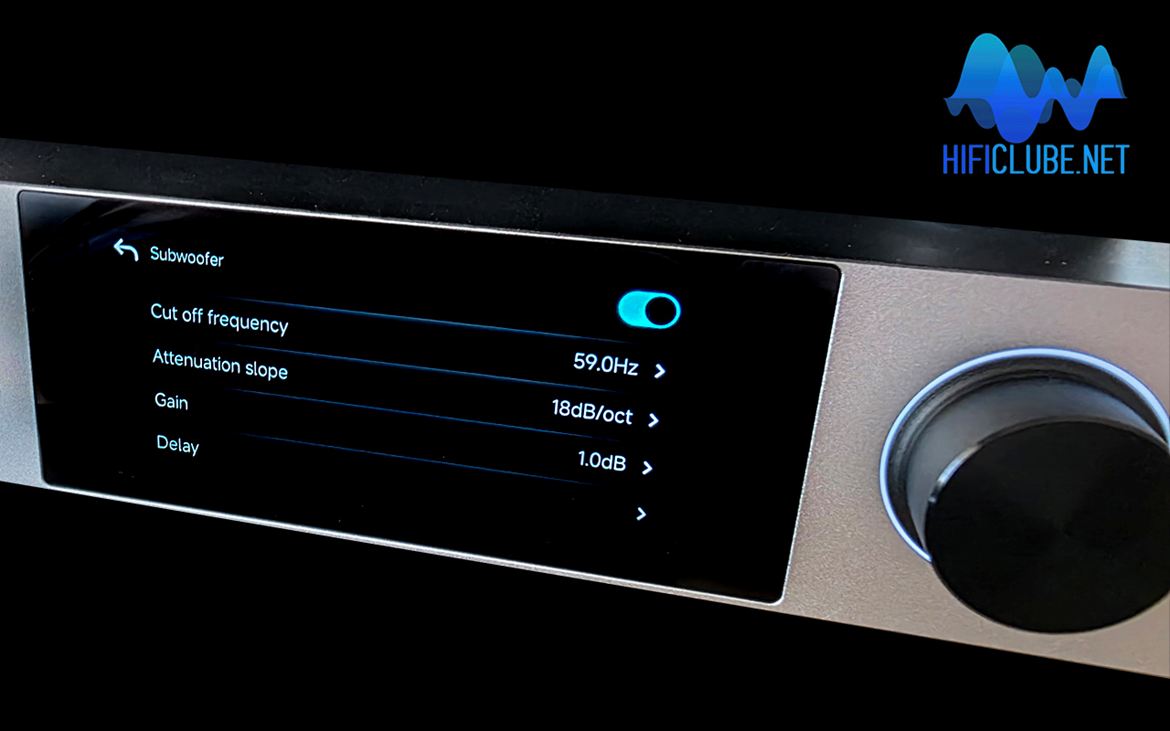
Luxsin X9 Bass Management function
Ultra-Versatile Preamplifier
The X9 functions as a single-ended or balanced preamp (RCA/XLR), with adjustable or fixed outputs, full DSP processing, and R2R volume control. What makes it stand out is bass management: through the menu/app, you can set low-pass filters for subwoofers, with slopes up to 48 dB/octave, and even adjust delay for phase alignment. I didn’t test this myself (as I have no subs in my system currently), but it’s reassuring to know it’s available.
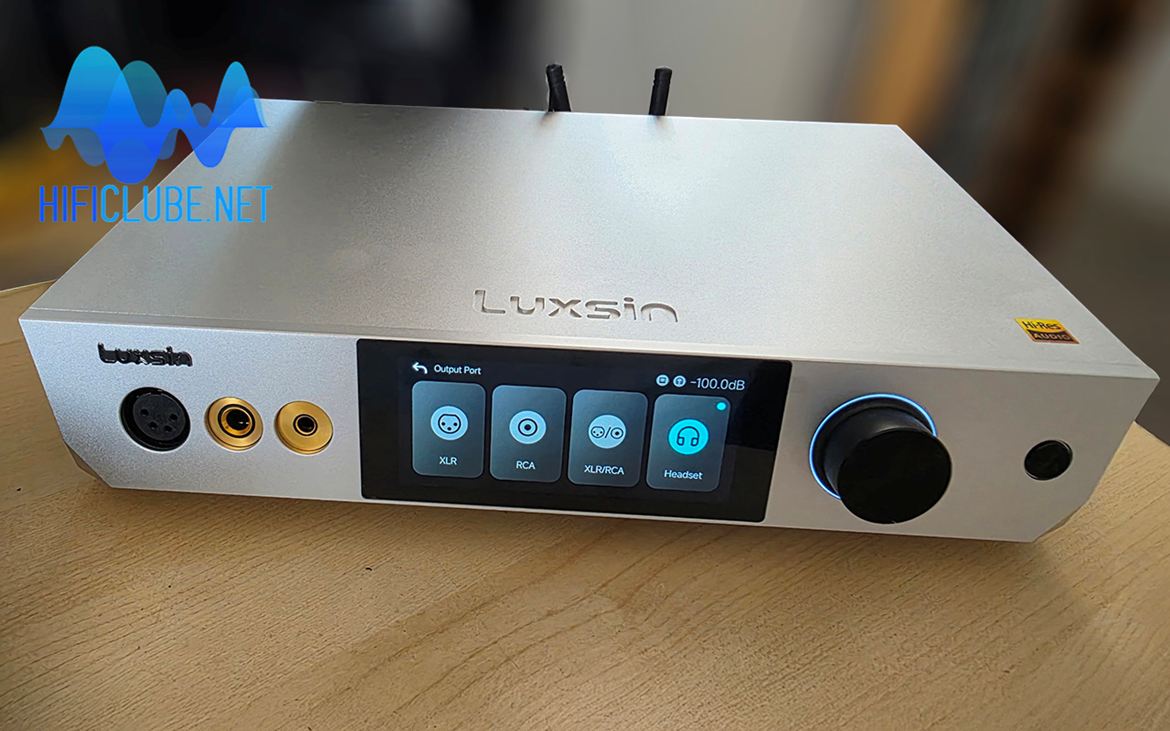
You can select all the inputs and outputs from the touchscreen.
Interface & Extras
The touchscreen allows you to access all settings, from input selection and HP-EQ/crossfeed activation to screen brightness (including full blackout mode), network configurations and firmware updates. The system boots almost instantly thanks to the RTOS.
Let me emphasise again that you can also control the X9 via a mobile app or browser-based web interface — very handy for remote volume and EQ adjustments. A 12-button infrared remote is also included.
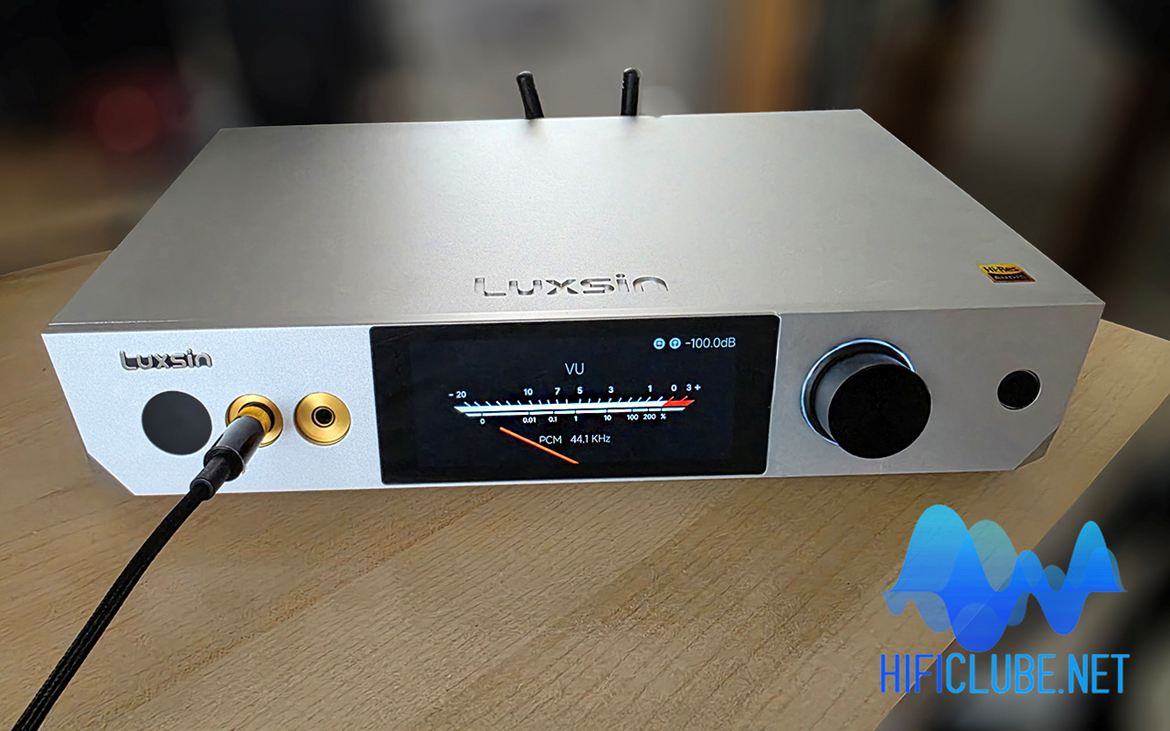
The X9 offers a suite of virtual VU meters in various styles (VU, PPM, etc.) It also o
The X9 enters in auto-standby mode after signal loss. The press button in the front works as one-touch mute, long-press switch-off, or you can use the rear power switch for a full shutdown.
The animated needles follow music in real time, adding a retro charm many audiophiles appreciate, blending aesthetics and utility (level monitoring)—and yes, you can switch them off too.
The processor enables native playback of PCM up to 768 kHz/32-bit and DSD512.
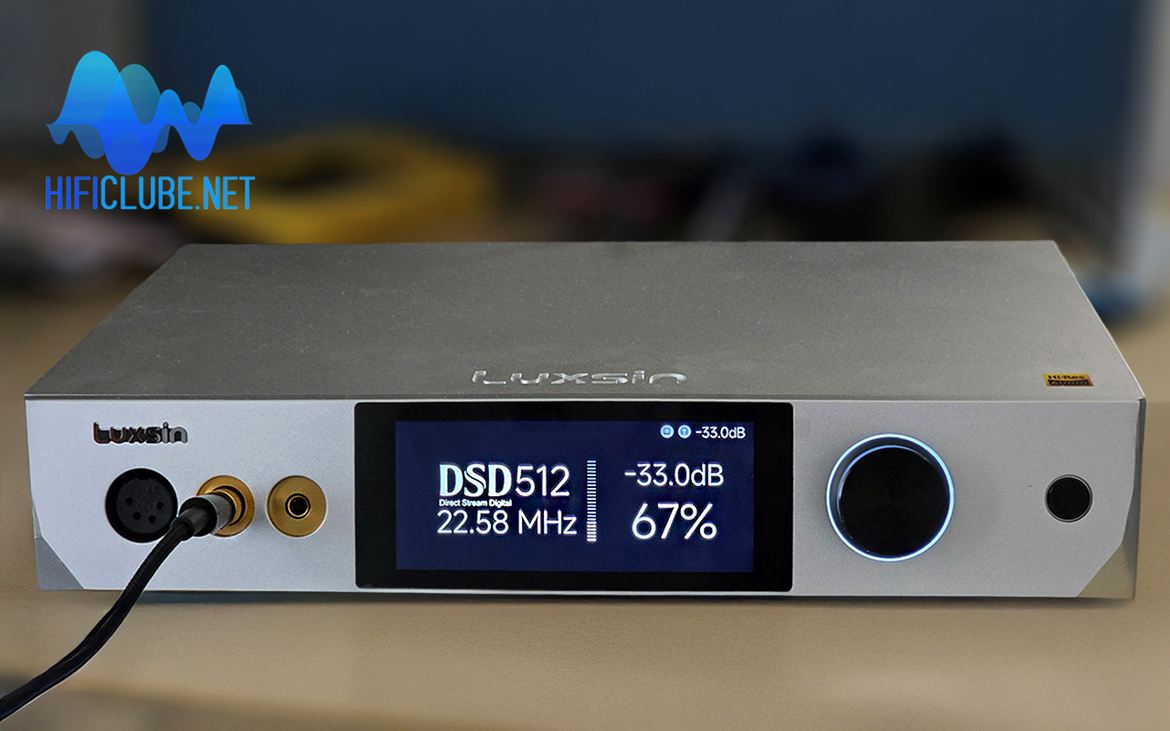
The X9 is DSD512 compatible.

The X9 is PCM768 kHz - 32 bit compatible
DAC & DSP
At the core sits the flagship AKM AK4499EX DAC, with a dedicated AK4191EQ modulator and AKM AK7739 DSP handling advanced digital processing. An XMOS XU316 USB processor enables native playback of PCM up to 768 kHz/32-bit and DSD512. It’s true, I checked it: see photos above). The femtosecond Accusilicon oscillator reduces jitter to negligible levels, ensuring a clean, artefact-free signal path.
Note: In the manual, the X9 is described as compatible with MQA. However, the MQA icon and the blue light never appear. Nonetheless, the X9 plays MQA files at the maximum resolution of 352.8kHz.
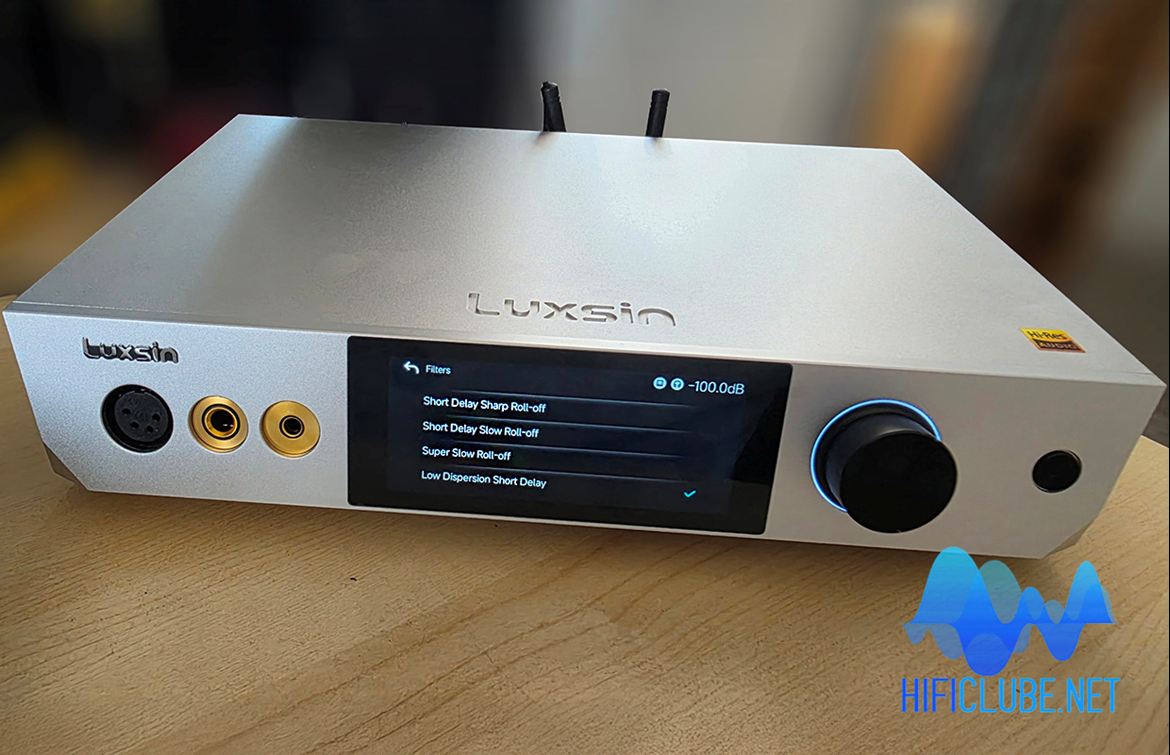
The X9 offers six digital filters to choose from: Sharp Roll-off, Slow Roll-off, Short Delay Sharp Roll-off, Short Delay Slow Roll-off, Super Slow Roll-off, and Low Dispersion Short Delay.
Six Digital Filters
The DAC offers a choice of six digital filters: Sharp Roll-off, Slow Roll-off, Short Delay Sharp Roll-off, Short Delay Slow Roll-off, Super Slow Roll-off, and Low Dispersion Short Delay. The differences between them are not easily audible, but they are measurable. Generally, ‘Sharp’ types produce less ultrasonic noise, while ‘Slow’ types provide better time-domain behaviour.
Quick technical & sonic notes
- Sharp Roll-off (linear-phase, long FIR)
Steep cutoff, strongest stopband rejection, flattest passband up to Nyquist; more symmetric pre/post-ringing.
Sound: crisp, precise, with a touch of “etched” quality on transients. - Slow Roll-off (linear-phase, gentler slope)
Earlier HF roll-off (at 44.1/48 kHz you may see slight droop near 20 kHz) and more ultrasonic images; less ringing amplitude.
Sound: smoother, a bit softer on leading edges. - Short Delay Sharp Roll-off (minimum/hybrid-phase)
Sharp frequency cutoff but with reduced pre-ringing (shifted to post-ringing); low latency.
Sound: clean yet a bit more immediate than standard Sharp. - Short Delay Slow Roll-off (minimum-phase, gentle slope)
Minimal pre-ringing, more ultrasonic energy and earlier HF droop.
Sound: relaxed, “analog-ish,” slightly warmer transients. - Super Slow Roll-off (very gentle, NOS-like)
Extremely mild filtering; highest ultrasonic/alias energy, noticeable HF droop well below Nyquist; virtually no ringing.
Sound: softest, airy but least precise—can blur attack; not ideal for amps/speakers sensitive to ultrasonics. - Low Dispersion Short Delay (minimum/hybrid-phase, low group-delay ripple)
Designed to keep timing consistent while controlling artifacts; a middle ground.
Sound: balanced and natural timing without obvious brightness or softness.
Practical tip: At higher sample rates (96/192 kHz) audible differences shrink. For “best measurements,” use Sharp; for a touch more ease and timing feel, try Short Delay variants; for the softest NOS-like presentation, Super Slow. When in doubt, go for Low Dispersion Short Delay. You can’t go wrong.
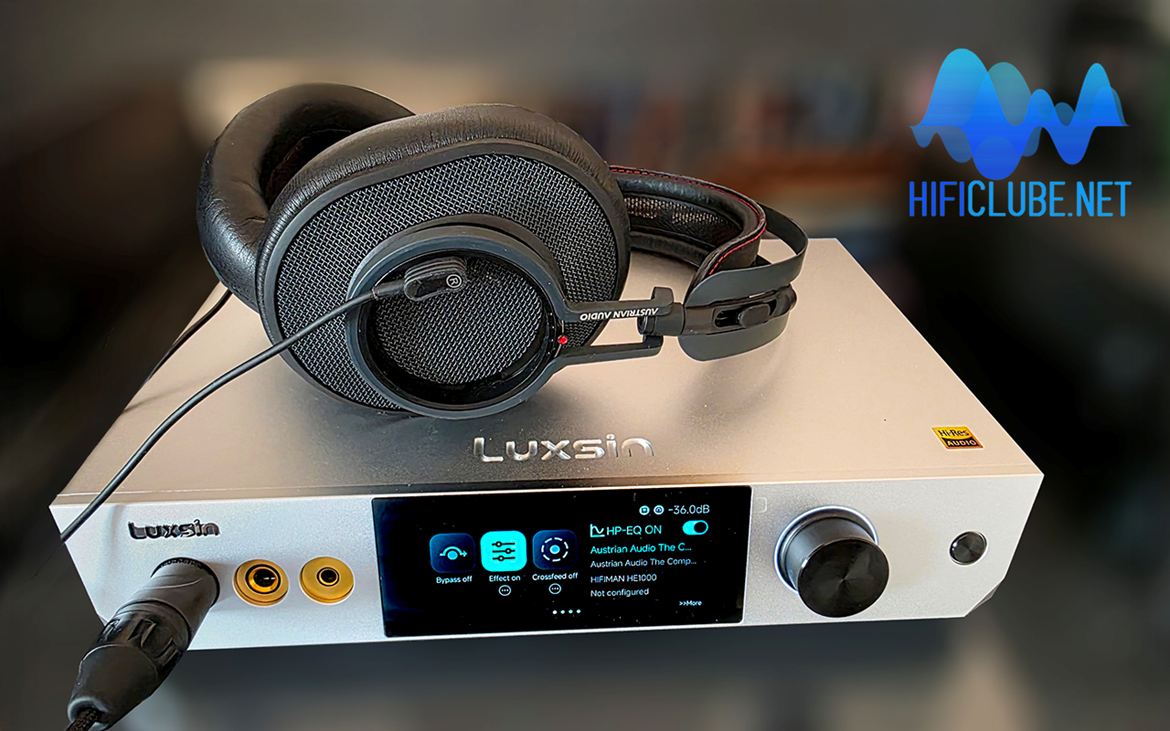
Luxsin X9 + Austrian Audio The Composer: flat response or Harman curve. The choice is yours.
Headphone Amplifier
A fully balanced amplifier stage built around OPA1612 op-amps and TPA6120A2 output drivers, using Dynamic Negative Feedback (DNF) to keep THD and IMD to imperceptible levels.
Output power is extremely generous: up to 6000 mW @ 16 Ω (balanced) and 3000 mW @ 32 Ω (balanced); or 1700 mW @ 32 Ω (single-ended) which is more than enough for any headphones on the market.
On the front panel, the X9 offers every headphone connection an audiophile could wish for: a single-ended 6.35 mm output and two balanced outputs — 4-pin XLR and 4.4 mm Pentaconn.
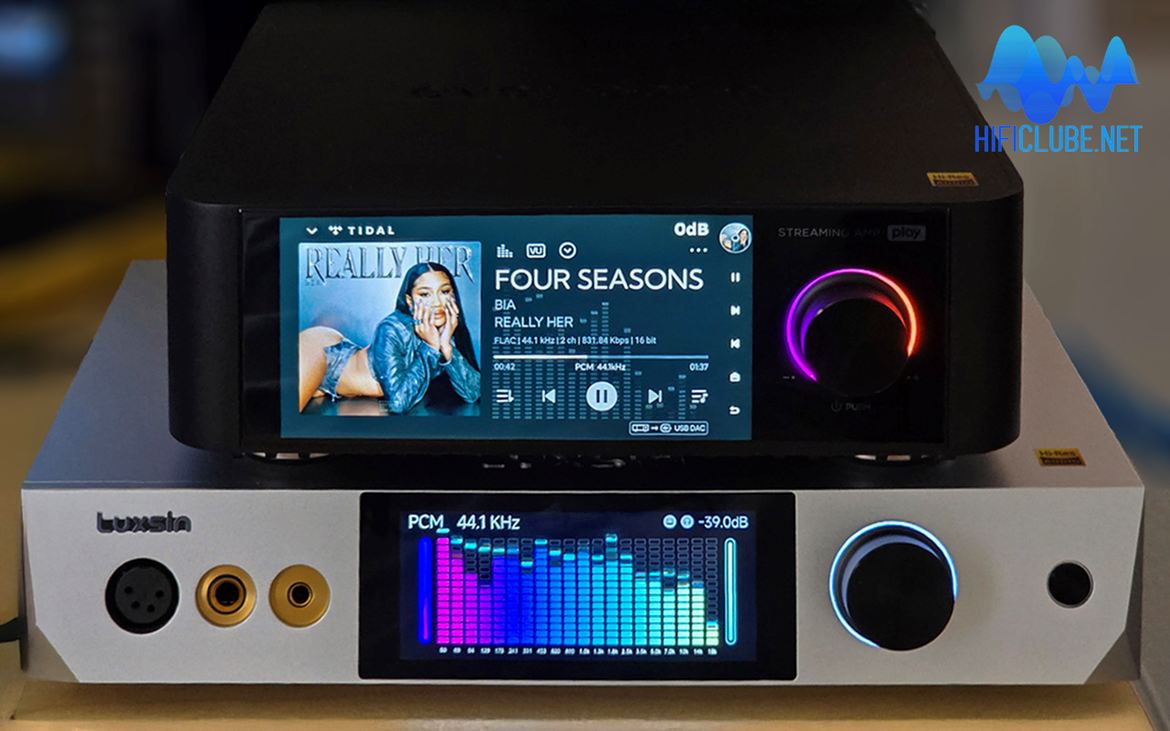
The Luxsin X9 and the Eversolo Play complement and complete each other.
Luxsin X9 + Eversolo Play
The X9 is not a streamer, so if you want access to Qobuz, Tidal, Spotify, or your music library, you can connect it with the Eversolo Play via USB or SPDIF cable. This keeps all digital processing on the X9 and bypasses the Play’s Class D amplification stage, while still providing the headphone outputs it lacks.
Analog Inputs/Outputs
The X9 features an RCA line-level analog input, allowing it to operate as a traditional stereo preamplifier — ideal, for example, for integrating a dedicated CD player or any other analog source — with selectable gain up to +10 dB.
For line outputs, it provides balanced stereo XLR (4.2 Vrms level) and RCA (2.1 Vrms) connections for linking to power amplifiers or active speakers. It also includes two dedicated subwoofer outputs (RCA) with bass management (see Ultra-Versatile Preamplifier).
In addition, it includes 12 V Trigger In/Out ports (3.5 mm) for synchronized power on/off sequencing with other system components.
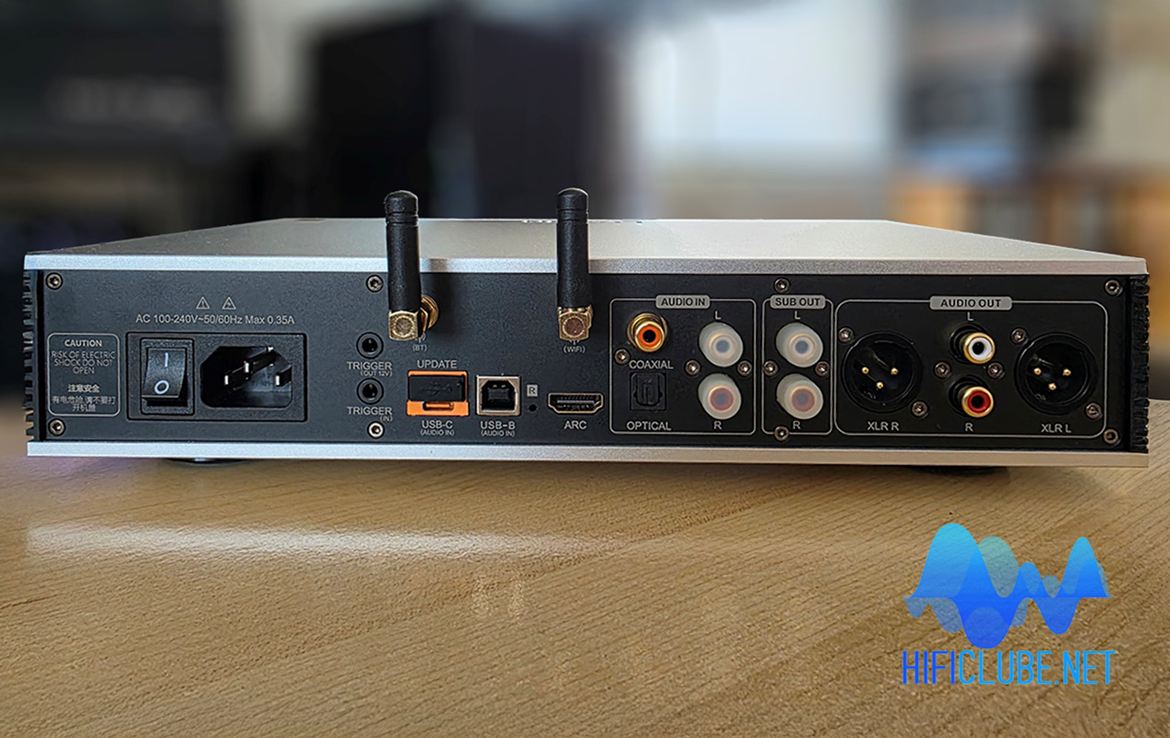
Digital Inputs
The X9 is equipped with two USB inputs (Type B and Type C) for connection to PCs, Macs, or mobile devices, operating in asynchronous mode via the XMOS XU316 interface (compatible with Windows 10/11, Android, and iOS), supporting high-resolution PCM and DSD formats.
It also offers S/PDIF optical and coaxial inputs (both up to 24-bit/192 kHz, with DoP64 support for DSD over S/PDIF), as well as HDMI ARC for audio from televisions or AV receivers (up to 24-bit/192 kHz stereo). For wireless operation, it integrates Bluetooth 5.0, as already mentioned.
Lab Performance
Independently tested, the X9 performed at the highest level:
- Frequency response: 20 Hz–20 kHz ±0.25 dB, depending on the selected digital filter.
- Dynamic range & SNR > 128 dB
- THD+N ~ 0.0001% (-116 to -120 dB, unweighted)
Noise floor is virtually inaudible, even with high-sensitivity IEMs. Performance remains exceptional across all outputs, placing the X9 among the best-measuring DAC/amps on the market.
Final Verdict
Having shared all I can, what more is there left to add? Is the Luxsin X9 truly the finest Headamp/DAC available? Not necessarily, as it depends on who is listening, how they are listening, and what they are listening to. The X9 is essentially neutral — flat, linear, and precise. Perhaps even too neutral and flat for some. Occasionally, it may seem to lack presence and body.
The X9 was integrated in a system comprising Austrian Audio The Composer open-back dynamic headphones, Lab12 Mighty tube amplifier and Sonus faber Concertino G4 loudspeakers.
You see, headphones—even more than loudspeakers—don’t necessarily sound better if they have a flat frequency response. I had the chance to confirm this during loudspeaker tests in an anechoic chamber: the “flattest” response didn’t always produce the best sound. On the contrary, a flat curve often sounded thin, with recessed mids, dry bass, and overly bright treble.
Here is what I can say: the X9 is the most versatile and intelligent Headamp/DAC I’ve come across. It automatically detects your headphones’ impedance and adjusts the gain accordingly.
Its DSP functions, beyond parametric EQ, enable you to apply the Harman target curve customized for over 2,500 headphone models in its internal database — restoring bass weight, midrange presence, and taming the treble without losing detail. Add to that crossfeed simulation, tonal balance adjustment, and soundstage width control. And three different outputs: XLR (balanced), 6.35 mm, 4,4 mm Pentaconn (try this one if you can; it sounds better).
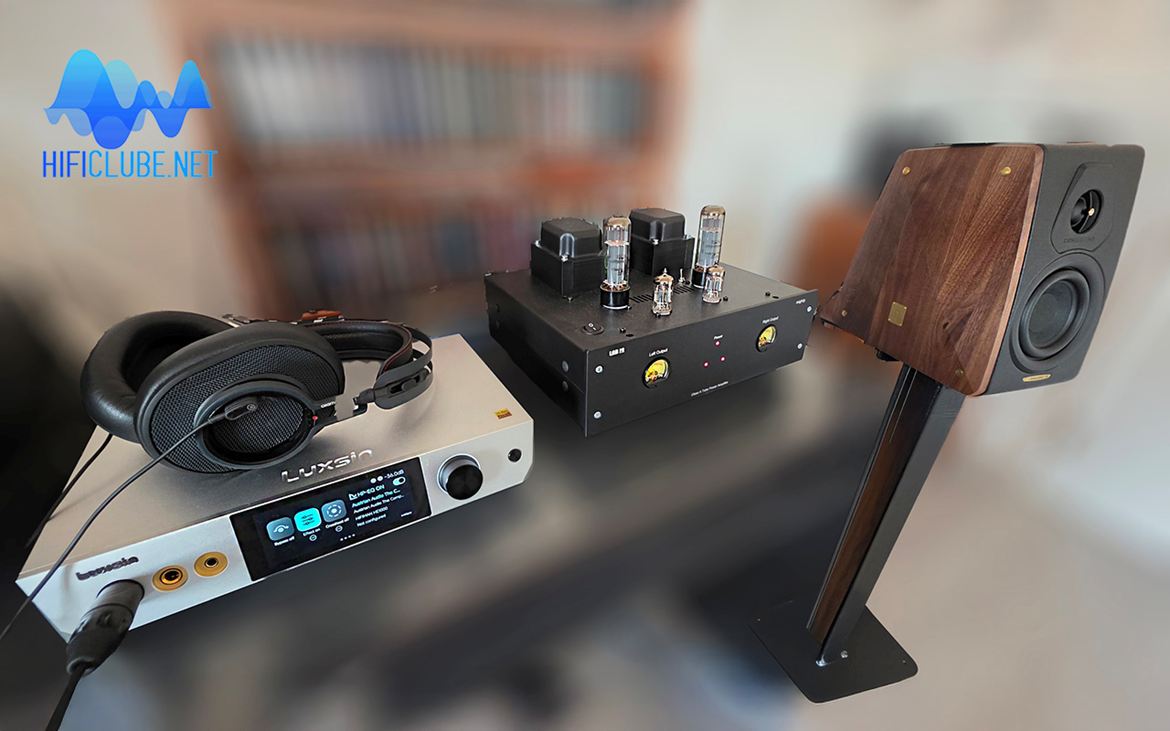
One of the systems used for listening: Austrian Audio The Composer (Hifiman HE1000), Lab 12 Lab tube amplifier and Sonus faber Concertino G4.
Yes, I know—in the end, after all the adjustments, we might find ourselves far from the so-called “original” sound. But what exactly is the original sound? Is it what the musicians played on stage? Or what the microphones captured? Or perhaps what the mixing engineer created in the studio? Or could it be the format it was stored in—analog or digital?
What if you had the tools to shape the sound to your taste, as if you owned a miniature mixing console? That’s precisely what the Luxsin X9 offers. Or not—if you prefer, you can ignore all DSP features and listen to the music as the mixing engineer intended, which might not necessarily be what the musicians intended.
If you always let others decide for you, one day, you’ll forget how to decide for yourself.
With the X9, everyone can listen to what they want, how they want, when they want.
Buy the Luxsin X9—you won’t regret it. This will be the last HeadAmp/DAC you’ll need: it powers older models such as the Hifiman HE1000, current ones like the Austrian Audio The Composer, and future headphones, whether planar or dynamic, regardless of impedance, sensitivity, or sonic signature.
The X9 does not impose a specific sonic signature. Instead, your listening experience with headphones now depends on the ‘signature’ you have selected—or chosen not to. And I also sign off with a bow to Luxsin for providing such flexibility. As a result, I am not listing a selection of suggested tracks here today. With the X9, everyone can listen to what they want, how they want, when they want.





